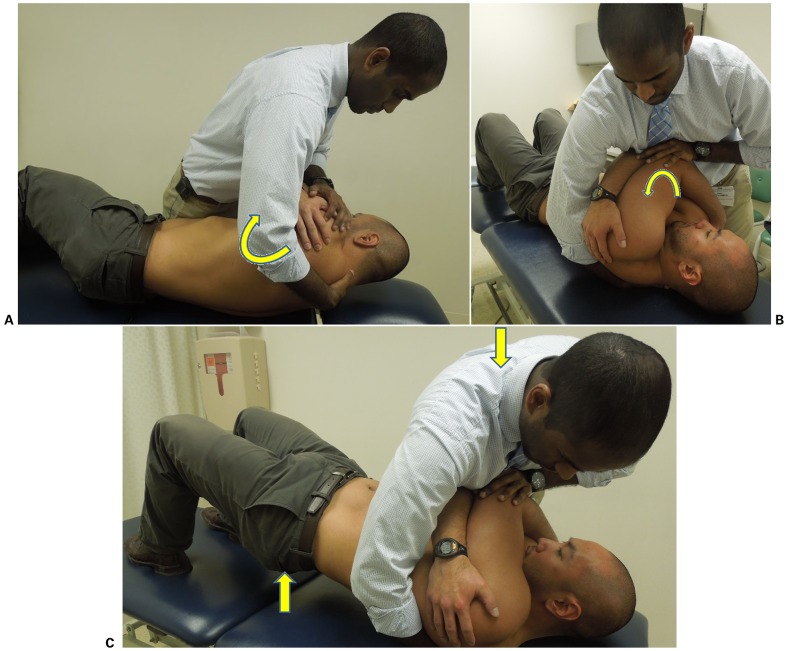Figure 2.
(A) Initial patient position; the therapist rolls the patient toward him (arrow), palpates for the spinous processes of C7 and T1, and places his hand in an open palm lumbrical grip such that the spinous process of C7 rests between the thenar eminence and metacarpal heads. (B) The patient is rolled back into supine on top of the therapist's hand (arrow), which slides slightly inferiorly toward T1 to obtain a skin lock. (C) The patient is instructed to bridge his hips up (arrow). As the therapist feels the CT junction lock out, a high-velocity, low-amplitude thrust manipulation is performed with a line of force perpendicular to the treatment table (arrow). Source: Author.

